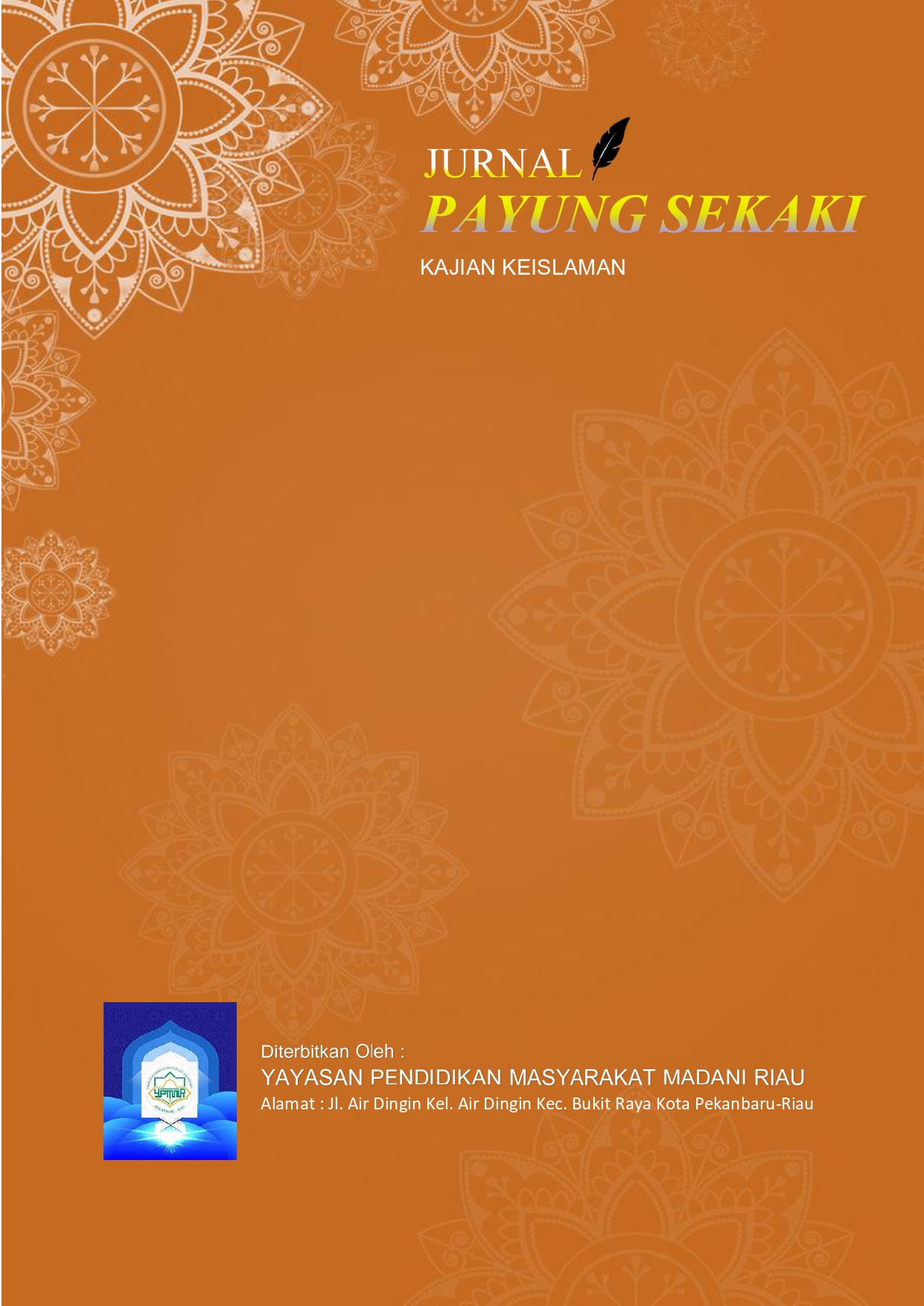ANALISIS KRITIS HAKIKAT DAN SEJARAH PENCIPTAAN MANUSIA DALAM PERSPEKTIF TEOLOGI DAN BIOLOGI
Keywords:
essence, origin, humanity, theology, biologyAbstract
The creation of humans has long been a subject of debate between theological and scientific perspectives. This article aims to explore the history of human creation using a comparative approach that integrates both theological and biological viewpoints. In theology, humans are viewed as special beings created with moral and spiritual purposes, serving as stewards of the Earth with ethical responsibility for maintaining ecological balance and fostering a relationship with the Creator. In contrast, biology explains the origin of humans through a complex and gradual process of evolution, portraying humans as a product of adaptation to ever-changing environments. The methodology employed in this study is a comparative approach, analyzing and contrasting theological perspectives found in religious texts with scientific theories of evolution, such as those proposed by Darwin and recent findings in genetics. A comparison with previous works shows that although these two approaches are often seen as conflicting, each contributes significantly to our understanding of human nature. The findings of this study conclude that integrating both perspectives offers a more holistic understanding of humans as beings with not only physical and cognitive dimensions, but also profound moral and spiritual aspects. Thus, these two viewpoints complement each other, providing a more comprehensive picture of human origins and purpose in life.
Downloads
References
Abdullah bin Muhammad bin Abdurrahman bin Ishaq Al-Syeikh. (2004). Tafsir Ibnu Katsir Jilid 7. Diterjemahkan oleh M. Abdul Ghoffar, Abdurrahim Mu’thi, dan Abu Ihsan Al-Atsari. Bogor: Pustaka Imam Asy-Syafi’i.
Abdullah bin Muhammad bin Abdurrahman bin Ishaq Al-Syeikh. (2004). Tafsir Ibnu Katsir Jilid 4. Diterjemahkan oleh M. Abdul Ghoffar, Abdurrahim Mu’thi, dan Abu Ihsan Al-Atsari. Bogor: Pustaka Imam Asy-Syafi’i.
Afrida. (2018). Hakikat Manusia dalam Perspektif Al-Qur`an. Jurnal Kajian Ilmu-Ilmu Hukum, 16(2), 54-59.
Arikunto, S., Suhardjono, & Supardi. (2012). Penelitian Tindakan Kelas: Pendekatan Kuantitatif, Kualitatif, dan R&D. Bandung: Alfabeta.
Az-Zuhaili, W. (2013). Tafsir Al-Munir. Jakarta: Gema Insani.
Darwin, C. (1959). The Origin of Species by Means of Natural Selection. London: John Murray.
Dobzharisky, T. (1979). Genetics of Evolutionary Process. New York: Columbia University Press.
Ferry, D., Santosa, T., & Kamil, D. (2019). Pengetahuan mahasiswa Institut Agama Islam Negeri Kerinci tentang asal usul manusia. Jurnal pendidikan biologi 1(1), 11-16.
Firman, Harry. (2019). Pengantar Filsafat Ilmu Pengetahuan Alam. Bandung: Sekolah Pascasarjana Universitas Pendidikan Indonesia.
Hamka. (2007). Tafsir al-Azhar. Jakarta: Pustaka Panjimas.
Hasibuan, Ali Daud, & Purba, Hadis. (2024). Tujuan Penciptaan Manusia: Perspektif Ilmu Kalam, Tasawuf, Filsafat, dan Implikasinya dalam Pendidikan Islam. ALACRITY: Journal Of Education, 4(2), 330-341.
Hassan, Munif Said. (2014). Pengantar Biologi Evolusi. Jakarta: Erlangga.
Hilmah, Noor. (2023). Tanggung Jawab Manusia Sebagai Khalifah di Bumi Menurut Ajaran Islam Dalam Menjaga dan Memelihara Alam Semesta. Jurnal Ilmiah Keagamaan, Pendidikan dan Dakwah, 19(2).
Iskandar, Djoko. (2008). Evolusi. Jakarta: Universitas Terbuka.
Junaidi, H. (2010). Adam dan Hawa Bukan Manusia Pertama: Teori Evolusi dan Asal Usul Manusia di Dalam Al-Qur’an. Yogyakarta: Jejak Kata Kita.
Krippendorff, K. (2018). Content Analysis: An Introduction to Its Methodology (4th ed.). Thousand Oaks, CA: SAGE Publications.
Kurniawati, E., & Bakhtiar, N. (2018). Manusia Menurut Konsep Al-Qur`an dan Sains. JNSI: Journal of Natural Science and Integration, 1(1), 78-94.
Lajnah Pentasihan Mushaf Al-Qur`an. (2016). Penciptaan Manusia dalam Perspektif Al-Qur`an dan Sains (2nd ed.). Jakarta: Lajnah Pentasihan Mushaf Al-Qur`an Gedung Bayt Al-Qur`an dan Museum Istiqlal.
Mayr, Ernest. 2010. Evolusi : Dari Teori ke Fakta. Jakarata: Kepustakaan Populer Gramedia.
Minkoff, E.C. (1983). Evolutionary Biology. Canada: Addison Wesley Publishing Company. Inc.
Rosowulan, Titis. (2019). Konsep Manusia dan Alam Serta Relasi Keduanya dalam Perspektif Al-Quran. Cakrawala: Jurnal Studi Islam, 14(1), 24-39.
Sani, A. F., Febrika, D. S., Rizal, R., & Ardi. (2023). Proses Penciptaan Manusia Dalam Perspektif Al-Qur'an dan Sains: Studi Literatur. al-Alam (INSEJ), 2(2), 52–58.
Saripuddin, Syukri, A., Badarrusyamsi. (2021). Islam dan Sains: Antara Islamisasi Ilmmu, Pengilmuan Islam, dan Transintegrasi Ilmu. Refleksi: Jurnal Filsafat dan Pemikiran Islam, 21(2), 140-164.
Shihab, M. Quraish. (2002). Tafsir Al-Misbah: Pesan, Kesan dan Keserasian Al-Qur`an (11th ed.). Jakarta: Lentera Hati.
Sholikhin, Muhammad. (2010). Ritual dan Tradisi Islam Jawa. Jakarta: PT. Suka Buku.
Simpson, G. G. (1953). The Major Features of Evolution, 2nd. Edition. New York: Columbia University Press.
Sugiyono. (2017). Metode Penelitian Kualitatif. Untuk Penelitian yang Bersifat: Eksploratif, Enterpretif, Interaktif, dan Konstruktif. Bandung: Alfabeta.
Sugiyono. (2018). Metode Penelitian Kualitatif, Kuantitatif, dan R&D. Bandung: Alfabeta.
Taufik, Leo Muhammad. (2019). Teori Evolusi Darwin: Dulu, Kini dan Nanti. Jurnal Filsafat Indonesia 2(3), 98-102.
Wastiqotul, Sunardi, & Agung. (2018). Peran Manusia Sebagai Khalifah Allah di Muka Bumi Perspektif Ekologis dalam Ajaran Islam. Jurnal Penelitian, 12(2), 355-378.
Wattimena. (2023). Menyingkap Misteri Kesadaran Manusia Lewat Filsafat Dan Neurosains. The Ary Suta Center Series On Strategic Management, Volume 61.
Downloads
Published
How to Cite
Issue
Section
License
Copyright (c) 2025 Sukma Pamungkas, Diah Novita Fardani

This work is licensed under a Creative Commons Attribution-ShareAlike 4.0 International License.












